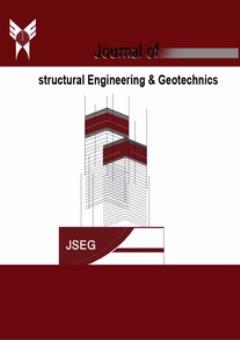Given the development of construction industry and design and implementation of high rise buildings with complex sections and various geometrical forms, the use of self-compacting concretes has received the attention of construction engineers and provided great advantag
More
Given the development of construction industry and design and implementation of high rise buildings with complex sections and various geometrical forms, the use of self-compacting concretes has received the attention of construction engineers and provided great advantages. Due to the increasing air pollution in cities, governments encounter the important issue of repelling the pollutants in which construction industry plays a key role; so that recycled concrete has been suggested to decrease the construction pollutants. Therefore, self-compacting recycled concrete can take advantage of the both types of concrete and enormously benefit the environment by decreasing the use of natural aggregates and preventing from deterioration of natural mines The most important properties of good concrete include its workability, strength and durability. The range of these three properties is determined for the concrete made according to EFNARC, ASTM and BS through fresh concrete tests including slump flow, V-funnel, J-ring, L-box, compressive strength, capillary water absorption and water penetration under pressure and the following results are gained. Increasing the amount of recycled aggregates resulted in reduction of self-compacting concrete criteria like slump, J-ring, etc. which indicated decline of plasticity, workability, passing ability and so on and that might be because of grading variations. Compressive strength was dramatically reduced by increasing the amount of coarse recycled aggregate so that compressive strength of concrete specimens declined by 2-10% as the amount of recycled aggregate rose from 25% to 100%. Increasing the amount of recycled aggregates generally enhanced percentage of capillary water absorption; so that according to the results of tests, water absorption rose by 5-15% in specimens by increasing percentage of recycled aggregates, indicating an increase in permeability and a decrease in durability of concrete. The main propose of this article is to determine the optimum replacing percentage of recycled aggregates to find the best compressive strength and durability of self-compacting concrete. Therefore, different samples with replacing recycled aggregates by 0%, 25%, 50%, 75% and 100%, water to cement ratio of 0.35 and 0.45 and different amount of super- plasticizer were. The result shows that by increasing in the amount of recycled aggregates, the strength of concrete decreases while the permeability of concrete reduces.
Manuscript profile


